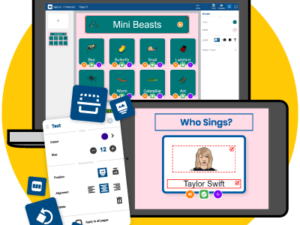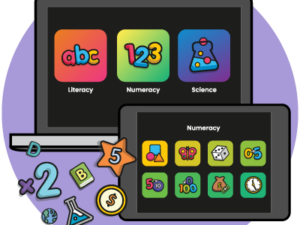Description
Inclusive Stories
Used widely in a range of educational settings, Inclusive Stories are fundamental for helping with cognitive development, sensory processing, communication skills, switching skills, cause and effect, building confidence, fostering repetition, reducing anxiety, sensory loss, AAC and much more.
Learning and Development
Inclusive Stories have been carefully collated into 12 meaningful categories and specially written to address functional skills and cross-curricular personal development e.g., SMSC (spiritual, moral, social, and cultural development) and SEMH (social, emotional, and mental health).
Educational Activities
Inclusive Stories also cover an array of topics including literacy, numeracy, science, computing, arts, humanities, PHSCE, physical education, design and technology and much more.
Associated Resources
Each Inclusive Story has accompanying resources to ensure maximum use and value for an educational setting. These resources include in depth delivery guidance, assessment and recording sheets, props lists, printables, symbol lists for AAC, cross-curricular ideas, a recipe book and more.
Accessible Activities
Inclusive Stories can be accessed by a wide variety of access methods including mouse and keyboard, touch screens and interactive classroom displays, one or two switches and eye gaze technology.
Access Anywhere
Inclusive Stories can be accessed securely online via Windows and Mac PC, or Chromebook. Alternatively, learners can play all touch accessible Inclusive Stories directly on an iPad using supported browsers.
Universal Benefits
Research has identified that multi-sensory story telling can help individuals with a wide range of learning disabilities:
- PMLD: Sensory rich experiences that allow for structured exploration and repetition leading to increased anticipation and engagement.
- ASD: The safe, predictable nature of the stories lend themselves well to students with Autism. Excellent for sensory processing disorders and for facilitating symbol-based and other augmentative communication systems.
- SLD: The simple and engaging nature of the stories help develop a range of numeracy & literacy skills. Targeted stories help focus on PSD, communication, independence, ICT and many more skills & concepts.
- SEMH: Familiar stories and routines can help reduce anxieties and offer opportunities to interact with others in a structured way. The humorous and mischievous nature of many of the stories appeal to more challenging students and the structure and adaptability can help enormously.
- ESOL: Highly sensory approach ensures listeners aren’t overly reliant on receptive communication. Excellent for AAC users too.
- Predominant Neurotype: Engaging, inclusive stories that appeal to all learning styles and are universal for development of all learning. Children, teens, and adults respond very positively.
- Dementia: Inclusive Stories can help with sensory loss and can alleviate associated lethargy, confusion and disorientation.





